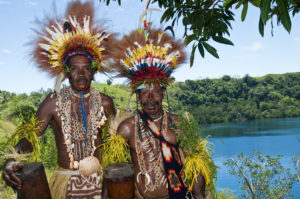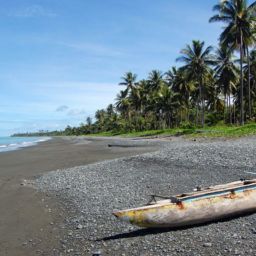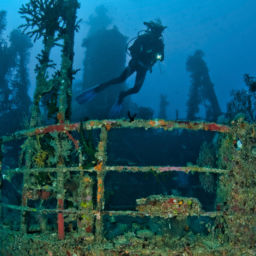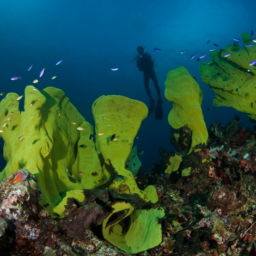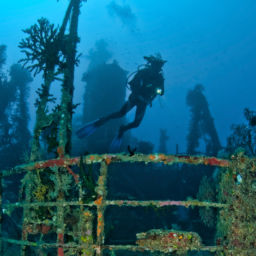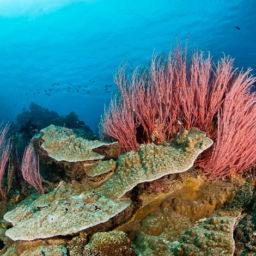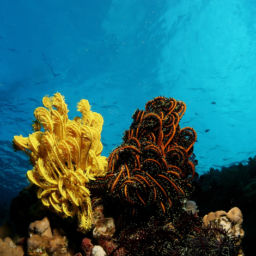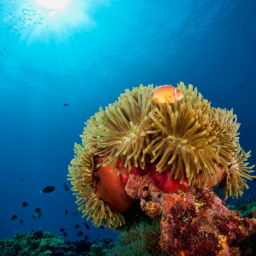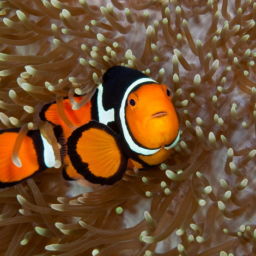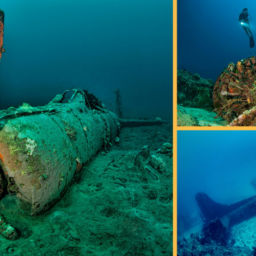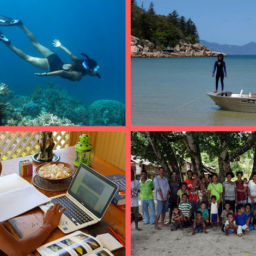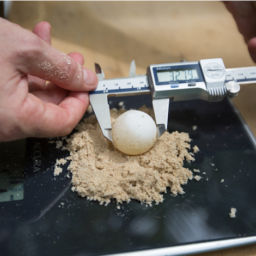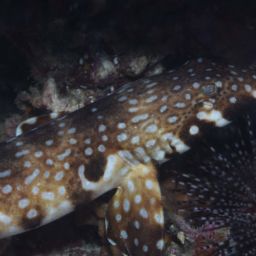Truly one of the last frontiers, Papua New Guinea is a wild and adventurous place with much to see both above and below the water. Scuba diving in Papua New Guinea is not to be missed.
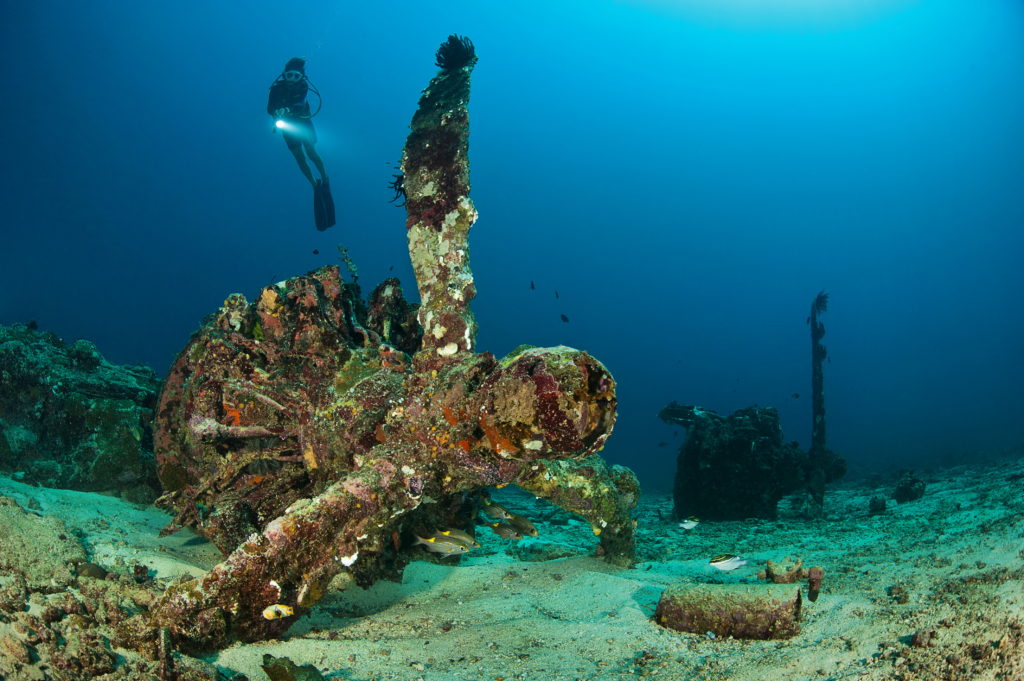
Where is Papua New Guinea?
More commonly known as PNG, the country was formerly an Australian colony, gaining full independence in 1975. Physically located north of Australia on the eastern half of the huge island of New Guinea (the western half is the Indonesian province of West Papua, the location of Raja Ampat), and firmly in the center of the Coral Triangle, PNG is part of the world’s most biodiverse marine area. Scuba diving in Papua New Guinea is therefore some of the best in the world.
PNG has a population of around 8 million people, but over 850 languages make it one of the world’s most diverse countries. PNG represents a huge patchwork quilt of over 1,000 traditional societies and ethnic indigenous groups.
The scuba diving in Papua New Guinea is best suited to the adventurous traveler who wants to experience some of the best the Coral Triangle has to offer, together with a collection of WWII wrecks. This remote location also offers the chance to immerse yourself into traditional tribal cultures as well.
Getting There and Around
Papua New Guinea has one international airport in Port Moresby, the nation’s capital city. It has what you might call a bit of an image problem. The national carrier is Air Nuigini, which flies to Australia, Singapore, Manila, Hong Kong, Bali and Tokyo.
PNG is a big country, roughly the size of California when all the island provinces are included. It’s quite rugged and mountainous with a very limited (non-existent in many places) road system as well. Realistically, there are only two ways to get around. Either you fly — preferred but expensive — or you travel the local way, by ferry, which is not for the faint of heart.
Main Dive Locations
You can divide the scuba diving in Papua New Guinea into a few key locations, with long-established operations in place. These offer a wide range of underwater experiences that we’ll delve into in future articles. But for now, a quick overview:
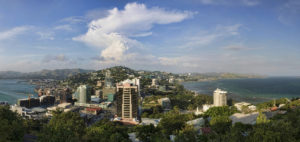
Port Moresby
Contrary to what you might expect around a busy city, there is some excellent diving in and around Port Moresby. You’ll find some superb reefs along with ship and aircraft wrecks.
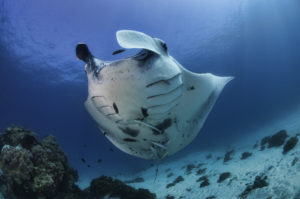
Milne Bay
Located at the southeastern tip of the main island of New Guinea, Milne Bay put PNG on the discerning international diver’s bucket list. Simply stated, Milne Bay offers some incredible diving. Many sites in the huge bay’s northern area accessible from Tawali Dive Resort. You’ll have to join a liveaboard to see the rest of Milne Bay.
Tufi
One of New Guinea’s most beautiful spots, Tufi sits on the northeast coast of the island. Picture the fjords of Norway or New Zealand, but covered in dense rainforest that reaches to the water’s edge. Then throw in some amazing critter diving and dozens of pristine offshore reefs, only dived by the guests at Tufi Dive Resort.
New Britain
The island province of New Britain is so large and mountainous that it boasts two weather systems. Patterns on the more-developed north coast are opposite those on the remote south coast. Diving on the north coast centers around the incredibly biodiverse Kimbe Bay and the WWII wrecks of Rabaul. Walindi Resort and liveaboard MV FeBrina have you covered in Kimbe Bay. On the south coast, you will experience even more remote reefs, rarely dived at all.
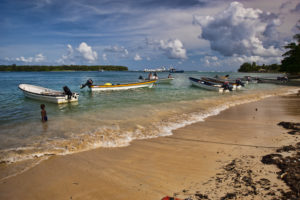
New Ireland
At the eastern edge of Papua New Guinea is the island of New Ireland and its close neighbor New Hanover. Here you’ll find many diveable WWII aircraft and shipwrecks. Add in the big fish that gather in the area due to the rich currents that sweep around the main town of Kavieng and you have some tremendous diving.
Is Papua New Guinea safe?
PNG suffers from terrible press, particularly in Australia because of the number of expats who work in the country’s large resources sector. Unfortunately, the tabloids like nothing more than to hype up an incident.
The basic law-and-order problem stems from the Raskol gangs in Port Moresby. The vast majority of the PNG population lives outside the towns, in small villages where life is very much subsistence- and community-based. Here, the land and the sea provide most of what people need to survive.
Locals purchase luxuries like soap, cooking oil and kerosene for lighting with money earned from selling excess produce at local markets. The lucky few who have access to tourists sell handicrafts as well. Young men often leave their villages to try and make it in Port Moresby. But, lacking any real job skills, they either return home or join one of the gangs that survive through petty crime.
Talk to any expat in Port Moresby and they will have had, or know of, a “near-death” brush with a Raskol or two. But the fact is that crime against foreigners is usually very opportunistic. Such crimes are highly visible and result in a violent and often ex-judicial response from the police, whereas violent crimes against Port Moresby locals sadly rarely produces an adequate response.
As a visitor to Papua New Guinea, the best way to stay completely safe in Port Moresby is to stay cocooned in your hotel and not venture out at all. It’s a bit extreme, but exactly what I did the first time I stayed there. All the main hotels offer airport pick-up and drop-off, so you will be able to safely transit and then just hunker down.
Alternatively, if you want to see a bit of Port Moresby (to be covered in the next article) then arrange a tour with your hotel. The drivers know where they can and cannot take you safely, plus they can spot a Raskol from a great distance.
Should You Visit Papua New Guinea?
A visit to PNG is best undertaken by those who seek something different. It’s all about managing the risks and the upside is tremendous. Decide which location is right for you (our upcoming articles will help narrow it down), then plan your flights accordingly to minimize your time in Port Moresby.
If you’re planning on diving near the capital city, breaking up your journey and diving Port Moresby either at the beginning or end of a trip to PNG is a viable option.
There’s currently only one option for diving the area, also to be covered in greater detail in our next article. The Dive Center operates out of the Airways Hotel and is a short drive from the airport.
The other option would mean staying out in Bootless Bay at the Loloata Dive Resort, but its new owners have closed it for renovations, and it is not certain that it will offer diving when it does re-open.
Most flights from Australia arrive in Moresby just after lunch and you should be able to catch a connecting flight to your resort that afternoon. It’s a short, safe walk from the international terminal to the domestic one. Once you arrive at your final destination, you will be in the safe and experienced hands of the local operator, who will meet you at the airport.
If you can’t get a same-day connecting flight, book one of the main hotels in Port Moresby. They’ll pick you up at the airport and take you safely back the next day. Stay tuned for more in-depth coverage of all the best scuba diving in Papua New Guinea, starting with Port Moresby.


